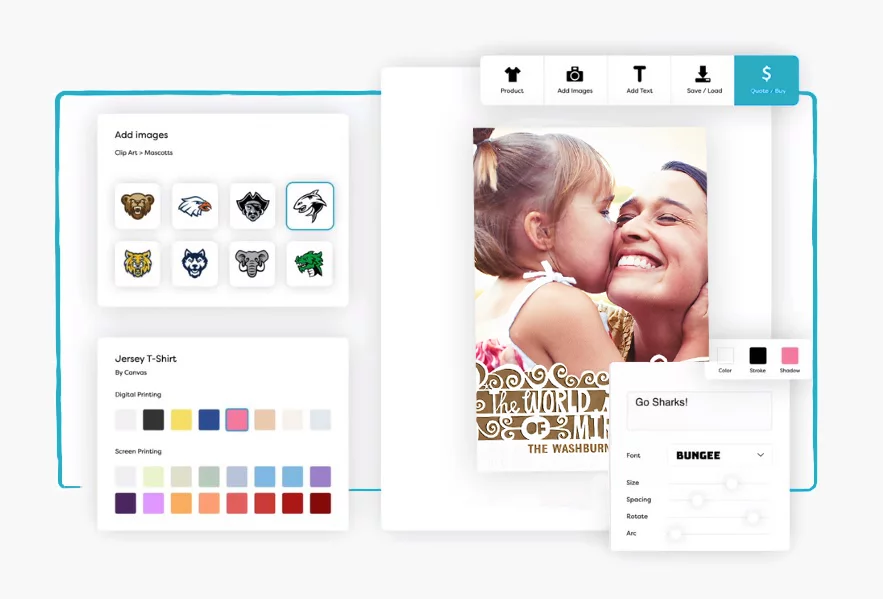Ecommerce has revolutionized various sectors, and the print industry is no exception. With the advent of online platforms, the way people purchase printed materials has undergone a significant transformation. This article explores the growth of ecommerce within the print industry, delving into its historical perspective, current landscape, advantages, challenges, technological advancements, marketing strategies, and future trends.
Introduction to Ecommerce in the Print Industry
Ecommerce, short for electronic commerce, refers to the buying and selling of goods and services over the internet. In the print industry, ecommerce has emerged as a pivotal force, reshaping how consumers interact with print businesses. Traditionally, customers would visit physical stores or printing presses to place orders for business cards, flyers, banners, and other printed materials. However, the rise of ecommerce platforms has made these services accessible with just a few clicks, offering unparalleled convenience and efficiency.
Historical Perspective
The print industry has a rich history dating back centuries, from the invention of the printing press to the digital revolution. Initially, printing was a labor-intensive process, involving movable type and manual presses. Over time, advancements such as lithography and offset printing revolutionized the industry, enabling mass production of printed materials. The introduction of ecommerce in print marked a new chapter, allowing businesses to reach a broader audience and streamline their operations.
Current Landscape
Today, ecommerce has become integral to the print industry, with numerous online platforms catering to diverse printing needs. From small businesses to large corporations, print ecommerce offers a wide range of services, including digital printing, offset printing, large-format printing, and more. Market statistics indicate a steady increase in online print orders, driven by factors such as convenience, competitive pricing, and rapid turnaround times.
Advantages of Ecommerce in Print
One of the primary advantages of ecommerce in the print industry is the unparalleled convenience it offers to customers. Instead of visiting physical stores, clients can place orders from the comfort of their homes or offices, saving time and effort. Additionally, ecommerce print businesses can leverage automation and digital workflows to reduce overhead costs and offer competitive pricing, attracting a larger customer base.
Challenges Faced
Despite its benefits, ecommerce print also faces several challenges. Competition from traditional print methods remains a significant hurdle, as some customers still prefer the tactile experience of visiting a brick-and-mortar store. Moreover, maintaining quality control and ensuring customer satisfaction can be challenging in the digital realm, where variables such as color accuracy and print resolution come into play.
Technological Advancements
Technological innovations have played a crucial role in driving the growth of ecommerce in the print industry. Digital printing technologies have evolved rapidly, offering high-quality prints with quick turnaround times. Moreover, advancements in customization and personalization allow customers to tailor their orders according to their preferences, enhancing the overall shopping experience.
Ecommerce Platforms and Tools
A plethora of ecommerce platforms and tools are available to print businesses, each offering unique features and functionalities. Popular platforms such as Shopify, WooCommerce, and Magento provide customizable solutions for setting up online storefronts. Additionally, tools for managing inventory, processing orders, and analyzing customer data are essential for optimizing operations and maximizing efficiency.
Marketing Strategies
Effective marketing is crucial for attracting customers and driving sales in the competitive ecommerce print market. Search engine optimization (SEO) and content marketing can improve visibility and organic traffic to online stores. Similarly, social media advertising allows print businesses to engage with their target audience and showcase their products and services effectively.
Customer Experience and Satisfaction
Providing an exceptional customer experience is paramount in ecommerce print. User-friendly interfaces, intuitive navigation, and responsive customer support contribute to a positive shopping experience. Building trust and loyalty through transparent communication and reliable service fosters long-term relationships with customers, leading to repeat business and referrals.
Sustainability in Ecommerce Print
As environmental awareness grows, sustainability has become a key consideration in the print industry. Ecommerce print businesses are increasingly adopting eco-friendly practices, such as using recycled materials, reducing waste, and minimizing carbon emissions. By prioritizing sustainability, print companies can appeal to environmentally conscious consumers and contribute to a greener future.
Future Trends
Looking ahead, the future of ecommerce in the print industry is filled with exciting possibilities. Emerging technologies such as 3D printing and augmented reality are poised to revolutionize the way printed materials are produced and consumed. Furthermore, trends such as personalized printing and on-demand manufacturing are expected to gain traction, catering to the evolving needs of consumers.
Conclusion
In conclusion, the growth of ecommerce has profoundly impacted the print industry, offering unprecedented opportunities for businesses and consumers alike. From convenience and cost-effectiveness to technological advancements and sustainability, ecommerce print continues to shape the way we interact with printed materials. By staying abreast of emerging trends and leveraging innovative strategies, print businesses can thrive in the dynamic digital landscape.
FAQs
- What are some popular ecommerce platforms for print businesses?
- Shopify, WooCommerce, and Magento are among the popular platforms used by print businesses to set up online stores.
- How can print businesses ensure quality control in ecommerce?
- Print businesses can invest in color management systems, conduct regular quality checks, and provide sample proofs to customers for approval.
- What role does customization play in ecommerce print?
- Customization allows customers to personalize their orders, making them more relevant and engaging. It also enhances the overall shopping experience.
- What are some sustainable practices adopted by ecommerce print businesses?
- Ecommerce print businesses can use recycled materials, minimize waste through efficient production processes, and invest in renewable energy sources.
- How can print businesses stay competitive in the digital age?
- By embracing technological innovations,
